#100 Eleventh Avenue
Text
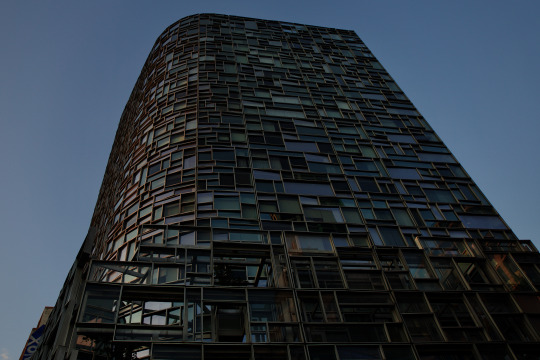
Tiled architecture - West Chelsea, New York City by Andreas Komodromos
100 Eleventh Avenue is a 23-story residential tower in Manhattan, New York City. It's located at the intersection of 19th Street and Eleventh Avenue. The building was designed by award-winning architect Jean Nouvel.
100 Eleventh Avenue has one of the most technologically advanced curtain wall systems in New York City. It's made of steel, glass, and reinforced concrete, and has polished concrete ceilings and terrazzo floors.
The building is considered a landmark condominium in the West Chelsea neighborhood.
#manhattan#city#nyc#cityscape#new york#urban#travel#new york city#nyandreas#architecture#jean nouvel#residential#highrise#art moderne#landmark#tumblrphoto#photographers on tumblr#sonya6000#pattern
4 notes
·
View notes
Link
0 notes
Text
Oakland Violence Continues With 2 Dead 1 Injured at Three Scenes Wednesday NBC Bay Area
Two extra individuals have been killed on the streets of Oakland and one other was shot, all throughout the identical 24-hour interval when federal officers have been on the town to speak about stem the violence.
Simply earlier than midnight Wednesday, Oakland police discovered a girl killed in a residential space of 82nd Avenue close to MacArthur Boulevard. It was unclear how the sufferer died. Investigators remained on the scene into the early Thursday morning hours.
Oakland police issued an alert for different regulation enforcement businesses in surrounding areas to be looking out for the suspect, although they didn’t launch a suspect description.
About 90 minutes earlier, at a gasoline station close to San Leandro Boulevard and 66th Avenue, Oakland officers discovered a driver who had been shot within the face. The sufferer reportedly was shot by way of the windshield whereas driving.
Round 10 a.m. Wednesday, a gunshot sufferer died at an area hospital, and police decided the capturing occurred within the 600 block of eleventh Road.
The violence occurred on a day when U.S. Sen. Alex Padilla, Rep. Barbara Lee (D-Oakland) and different leaders joined Oakland Mayor Libby Schaaf to speak about options to the violence, from growing funding for violence prevention to presumably declaring a public well being emergency.
Gun gross sales and gun violence spiked throughout the pandemic in communities across the Bay Space, and this has been a very lethal month in Oakland. For the second yr in a row, greater than 100 homicides have occurred within the East Bay’s largest metropolis.
Supply hyperlink
Originally published at SF Newsvine
0 notes
Photo

Luxury Market Report Highlights May9th - May15th, 2022 State Geek Alert: Most of the action occurred on the lower end of the market, as 20 deals were under $5 million. The median asking price of $4,995,000 was the lowest since December 14-20. 2020 39 contracts were signed in Manhattan at $4 Million dollars and above. Condos outsold co-ops, 24 to 9. 6 townhouses in the mix. No. 1 Contract PHA at 100 Eleventh Avenue $22.5 million No. 2 Contract 114 East 65th Street at $17.5 million 𝐌𝐢𝐜𝐡𝐞𝐥𝐞.𝐃𝐞𝐧𝐛𝐲@𝐄𝐥𝐥𝐢𝐦𝐚𝐧.𝐜𝐨𝐦 𝐿𝐼𝐶𝐸𝑁𝑆𝐸𝐷 𝐴𝑆𝑆𝑂𝐶𝐼𝐴𝑇𝐸 𝑅𝐸𝐴𝐿 𝐸𝑆𝑇𝐴𝑇𝐸 𝐵𝑅𝑂𝐾𝐸𝑅 sunset florida nyc
#michelemoves#nycrealestate#newyorklisting#nycgoldenhour#nycviews#nyclisting#newyork#nyctourist#touristattractionnyc#luxurymarketnyc#nycagent#nycrealedstateagent#nycsunset#floridarealestate#miamilisting#buyinghomes#milliondollarlisting#luxurymarket#beingatouristinyourowntown#luxuryreport#realestatereportnyc#nycneighborhoodguide
0 notes
Photo

Picturing Architecture at the Venice Biennale
Frank Gehry's IAC Building and Jean Nouvel's 100 Eleventh Avenue.
© Amy Dolego
15th International Architecture Exhibition
#amy dolego#photographer#venice biennale#architecture#frank gehry#architect#iac building#jean nouvel#100 eleventh avenue#new york city#black & white photography
4 notes
·
View notes
Photo

0 notes
Photo

Jean Nouvel's 100 Eleventh Avenue in Chelsea. It looks fine from the distance, but once you get closer.. Nouvel explained that "The architecture expresses the exceptional pleasure of being at this strategic point of Manhattan." 🤔
7 notes
·
View notes
Photo
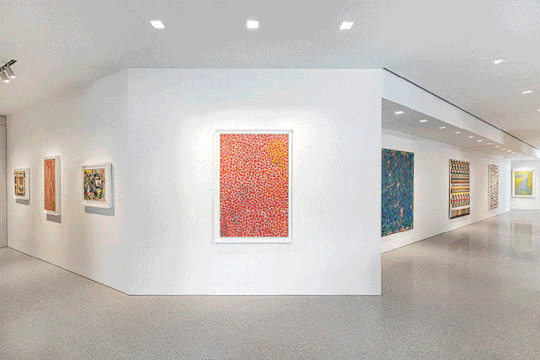
James Brooks (F ‘66), Elaine Dekooning (F ‘79), Sam Gilliam (F ‘71), Alfred Leslie (F ‘65, ‘81), Richard Pusette-Dart (F ‘56), Milton Resnick (F ‘77, ‘81),
William T Williams (A ‘65, F ‘71, ‘73, ‘78)
Distinctive/Instinctive
Michael Rosenfeld Gallery
100 Eleventh Avenue, 19th Street, New York, NY 10011
February 26 - April 10
1 note
·
View note
Photo

Spinning and Sparkling My take of @ateliersjeannouvel ‘s “100” residential building on Eleventh Avenue in New York. The slightly different angles of the windows create a wonderful variety of hues. Together with its curved surface the building altogether reminds of a sparkling river. A genuine jewel to the New York skyline. . #paulbrouns #saatchiart #theotherartfair (bij 100 Eleventh Avenue) https://www.instagram.com/p/B8jzM7WHMrM/?igshid=keopvbadshm1
60 notes
·
View notes
Photo




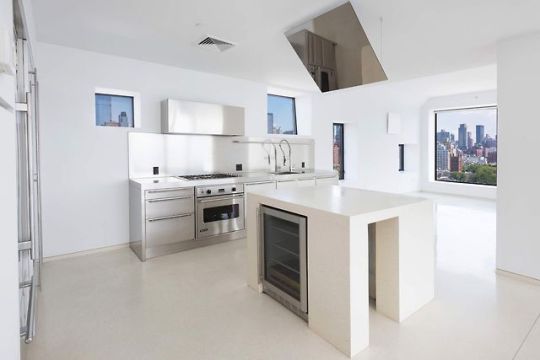


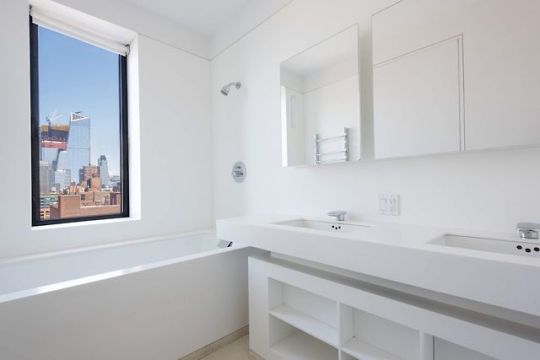
100 Eleventh Avenue, New York, NY ($7.9 million USD)
#luxury#real estate#interiors#architecture#new york#luxury real estate#travel series#travel series: usa#travel series: new york#outside gta#outside canada#contemporary homes#condo#apartment
342 notes
·
View notes
Link
We’ve got rules and standards for everything we include in our novels—how to start those novels, how to increase tension, how to introduce characters, how to format, what to include in dialogue, how to punctuate dialogue, what to exclude from the first chapter. And we have rules for numbers. Or maybe we should call all these rules conventions.
This article covers a few common specifics of using numbers and numerals in fiction. I’m just going to list the rules here, without much explanation, laying out those that you’ll typically make use of in a novel. Keep in mind that there are always exceptions. For the most part, you’ll want to stick to the standards to make the read smooth and easy for the reader and create consistency within the manuscript.
Yet we’re talking fiction here, not a treatise or dissertation or scientific finding. You have choices. And style choices sometimes get to stomp all over the rules. If you want to flout the rules, do so for a reason and do so consistently every time that same reason is applicable in the manuscript.
For a comprehensive list of the rules concerning numbers, check out the Chicago Manual of Style or another style guide.
______________________
General Rules
__ Spell out numbers from zero through one hundred. You could argue for zero through nine, as is recommended for AP style, but do note that the recommendations in the Associated Press Stylebook are primarily for newspaper and magazine writing. Some rules are different for fiction.
You could also make a style choice to spell out almost all numbers, even if that conflicts with this and other rules.
Use numerals for most numbers beyond one hundred. While this is the standard, there are definitely exceptions to this one.
The witch offered Snow White one crisp, dewy apple.
Bobby Sue sang thirty-two songs before her voice gave out.
The rock-a-thon lasted for just over 113 hours.
The witch offered Snow White 1 crisp, dewy apple. Incorrect
__ Spell out these same numbers (0-100) even if they’re followed by hundred or thousand. (Your characters may have reason to say or think all manner of odd numbers, so yes, zero thousand might come up, even though this isn’t a common usage in our 3-D lives.)
The forces at Wilmington were bolstered by the arrival of ten thousand fresh soldiers.
The knight had died four hundred years earlier.
But—The knight had died 418 years earlier.
“How many thousands of lies have you told?”
“I’ve told zero thousand, you fool.”
__ Spell out ordinal numbers through one hundred as well—even for military units and street names. Ordinal numbers are often used to show relationship and rank.
We’d write the Eighty-second Airborne Division but the 101st Airborne Division. (Newspapers and military publications may have different conventions.)
A restaurant would be on Fifth Avenue, not 5th Avenue. Or the restaurant is on 129th Street, not One hundred and twenty-ninth Street.
A quick guide to ordinals—
no ordinal for zero twentieth
first twenty-first
second twenty-second
third and so on . . .
fourth
fifth*
sixth thirtieth (thirty-first, thirty-second, and so on)
seventh fortieth
eighth fiftieth
ninth sixtieth
tenth seventieth
eleventh eightieth
twelfth �� ninetieth
thirteenth
fourteenth one hundredth
fifteenth* one thousandth
sixteenth one millionth
seventeenth
eighteenth
nineteenth
The only odd ordinals are those using fives—fifth and fifteenth. Note the letter D in both hundredth and thousandth.
__ Use full-size letters, not superscript, to mark ordinal numbers (st, nd, rd, th) written as numerals.
__ Use first, second, third and so on rather than firstly, secondly, thirdly unless your character would use this odd construction as part of her style.
__ Spell out numbers that start a sentence. If spelling creates something awkward, rewrite.
One hundred and fifteen [not 115] waiters applied for the job.
__ Hyphenate compound numbers from twenty-one to ninety-nine. Do this when the number is used alone and when used in combination with other numbers.
Louise owned forty-one cars.
“I heard she owned one hundred and thirty-five diamond rings.”
__ For an easier read, when numbers are written side by side, write one as a numeral and the other as a word.
He made 5 one-hundred-pound cakes.
We lashed 3 six-foot ladders together.
__ Spell out simple fractions and hyphenate them.
He took only one-half of yesterday’s vote.
He needed a two-thirds majority to win the election.
__ For the most part, treat large numbers, made large by being paired with the words million, billion, and so on, just as you would other numbers.
Some nine [not greater than one hundred, so spelled out] million years ago, the inhabitants of Ekron migrated to our solar system.
The family had collected the pennies, 433 [greater than one hundred] million of them, over eighty years.
But for large numbers with decimals, even if the number is less than 101, use the numeral version.
The team needed 10.5 million signatures for their petition.
Yet since we want to hear the words, you could just as easily write—
The team needed ten and a half million signatures for their petition.
This last example works both for narration and dialogue. But for dialogue you could also write—
“The team needed ten point five million.”
__ Use words rather than symbols and abbreviations in dialogue and in most narrative. Symbols are a visual representation, but characters need to think and speak the words.
Use the words rather than the symbols for degree (°) and percent (%) and number (#), both in dialogue and narrative. Use the word dollar rather than the dollar sign ($) in dialogue. Do not abbreviate the words pounds or ounces, feet or inches (or yards), hours or minutes or seconds, or miles per hour (or similar words) in dialogue or narrative.
An exception might include something like stretches of text where you note the changing speeds of a car but don’t want to repeat miles per hour again and again. Your use of mph becomes a style choice.
You might find other exceptions in headers and chapter titles. You can, of course, use symbols in titles and headers if you want to. For example, in geo-political thrillers, stories that jump all over the world and back again, headers might show longitude and latitude and the degree symbol would come in handy.
If you do include full compass coordinates in the narrative, using numerals and the symbols for degrees, minutes, and seconds might be the best choice in terms of clarity and ease of reading.
“But I don’t have a million dollars.”
“Nobody gave a hundred percent.”
“The baby weighed seven pounds eleven ounces.”
“It’s fourteen degrees out there!”
The # of crimes he’d committed kept rising. Incorrect
The chasm looked at least 40 ft. wide. Incorrect
The roadster crept along at no more than 28 mph. Incorrect
Note: You’re writing fiction. Think flow in the visuals as well as in the words. What will make sense to the reader and keep him from tripping over your style choices?
Time
__ Use numerals when you include a.m. and p.m., but you don’t have to use a.m. and p.m.
It was 5:43 a.m. when he got me out of bed. Correct
It was five forty-three a.m. Incorrect
__ Use lower case letters with periods or small caps without periods for a.m. and p.m.
__ Include a space between the numbers and a.m. or p.m., but no space within a.m. or p.m.
__ Spell out numbers when you include o’clock.
But he did wait until after five o’clock to call.
__ Use numerals to emphasize exact times, except in dialogue.
She pointed out that it was still 5:43 in the morning.
“It’s four forty-three.” She looked out into the darkness. “In the morning!”
The robbery took place at 2:22 a.m.
__ Spell out words for the hour, quarter, and half hours.
The hall clock was wrong; it showed eight thirty. No, it showed eight forty-five.
__ Do not use a hyphen to join hours and minutes. I have seen advice on several Internet sites that says you do use a hyphen in such cases, except when the rest of the number is already hyphenated. So they’d have you write two-twenty but two twenty-five. This doesn’t make much sense, although there may be a style guide out there recommending such punctuation (and may provide a valid reason for it). The Chicago Manual of Style, however, does not use a hyphen (see 9.38 in the sixteenth edition). Their example is “We will resume at ten thirty.”
It was four-forty-five. Incorrect
It was four forty-five. Correct
The bomb went off at eleven-thirty. Incorrect
The bomb went off at eleven thirty. Correct
__ While we normally would never use both o’clock and a.m. or p.m. and typically don’t use o’clock with anything other than the hour, fiction has needs other writing doesn’t. The following might very well come out of a character’s mouth or thoughts—
It was five o’clock in the a.m.
“Mommy, it it four thirty o’clock yet?
Dates
__ Dates can be written a number of ways. The twenty-fifth of December, December 25, December 25, 2015, or the twenty-fifth are all valid ways of referring to the same day.
December 25th and December 25th, 2015 are incorrect. Do not use ordinal numbers for dates that include month, or month and year, written in this format. You can, however, write the twenty-fifth of December.
December 25 and December 25, 2015 would both be prounounced as the ordinal, even though the th is not written.
The exception is in dialogue.
“Your kids can’t wait for December twenty-fifth.”
__ Do not use a hyphen (actually, this in an en dash) for a range of dates that begins with the words from or between. (This rule is true of all numbers, not just dates, arranged this way.) Use the words to, through, or until with from, and and with between.
He planned to be out of town from August 15-September 5. Incorrect.
He planned to be out of town from August 15 to September 5. Correct
He planned to be out of town between August 15-September 5. Incorrect
He planned to be out of town between August 15 and September 5. Correct
He planned to be out of town August 15-September 5. Correct
__ Decades can be written as words or numbers (four- or two-digit years). Unless it’s in reference to a named era or age—the Roaring Twenties—do not capitalize the decade.
The cars from the thirties are more than classics.
Cars of the 1930s were my dad’s favorites.
The teacher played songs from the ’60s and ’70s to get the crowd in the right mood. (The punctuation is an apostrophe, not an opening quotation mark.)
__ There is no apostrophe between the year and the letter S except for a possessive.
The doctor gave up smoking back in the 1980’s. Incorrect
The doctor gave up smoking back in the 1980s. Correct
The doctor gave up smoking back in the ’80’s. Incorrect
The doctor gave up smoking back in the ’80s. Correct
BUT—She was the fifties’ [also the ’50s’] most glamorous star.
An earlier example was incorrect—She was decked out in cute 1950’s clothes, but the haircut was atrocious. Incorrect
__ Spell out century references.
He wanted to know if it happened in the eighteenth or the nineteenth century. When the guide reminded him it was the seventeen hundreds, he was even more confused.
__ Adding mid to date terms can be confusing. The general rule is that mid, as a prefix, does not get a hyphen. So midyear, midcentury, midterm, midmonth, and midthirties are all correct. (The same rules apply for other prefixes, such as pre or post, that can be used with date words.)
There are, however, exceptions—
Include a hyphen before a capital letter. Thus, mid-October.
Include a hyphen before a numeral. Thus, mid-1880s.
Include a hyphen before compounds (hyphenated or open). Thus, mid-nineteenth century and mid-fourteenth-century lore.
Note: The Chicago Manual of Style has a wonderful and comprehensive section on hyphenating words. I recommend it without reservation.
Dialogue
__ Spell out numbers in dialogue. When a character speaks, the reader should hear what he says. And although a traditional rule tells us not to use and with whole numbers that are spelled out, keep your character in mind. Many people add the and in both words and thoughts. Once again, the rules are different for fiction.
“I collect candlesticks. At last count I had more than a hundred and forty.”
“At last count I had more than one forty.”
“She gave her all, 24/7.” Incorrect
“She gave her all, twenty-four seven.” Correct
One exception to this rule is four-digit years. You can spell out years, and you’d definitely want to if your character has an unusual pronunciation of them. But you could use numerals.
“He told me the property passed out of the family in 1942.”
“I thought it was fifty-two?”
A second exception would be for a confusing number or a long series of numbers. Again, if you want readers to hear the character saying the number, spell it out. Even common numbers might be spoken differently. One character might say eleven hundred dollars while another says one thousand one hundred dollars.
If you have to include a full telephone number—because something about the digits is vital—use numerals, even in dialogue. (But if you want to emphasize the way the numbers are spoken, spell out the numbers.)
You’d use numerals rather than words because writing seven or ten words for the numbers would be cumbersome. But most of the time there is no reason to write out a full phone number.
__ Write product and brand names and titles as they are spelled, even if they contain numbers—7-Eleven, Super 8 hotels, 7UP.
Heights
__ Heights can be written in a variety of ways.
He was six feet two inches tall.
He was six feet two.
He was six foot two.
He was six two.
He was six-two. (a recommendation from some sources, although not one I’d make)
Money
__ Do not hyphenate dollar amounts except for the numbers between twenty-one and ninety-nine that require them. Don’t use a hyphen between the number and the word dollars (except as noted below). Note the absence of commas.
two dollars
twenty-two dollars
two hundred dollars
two hundred twenty-two dollars or two hundred and twenty-two dollars
two thousand two hundred and two dollars
But—
a two-dollar bill
a twenty-dollar fine
a two-hundred-dollar fine
a two-hundred-and-twenty-two-dollar fine
Punctuation
__ No commas or hyphens between hours and minutes, feet and inches, pounds and ounces, and dollars and cents that are spelled out. If the meaning is unclear, rewrite.
Ben promised to be there at four thirty, but it was six twenty when he pulled into the driveway.
At seven feet three inches, he was the shortest of the Marchesa giants.
The piece of salmon weighed one pound eleven ounces, but they charged the rude customer the price for three pounds.
He owed his boss forty-two fifty.
He owed his boss forty-two dollars and fifty cents.
__ Use hyphens for compound adjectives containing numbers the same way other compound are created. They are almost always hyphenated as an adjective before the noun. Age terms, both nouns and adjectives used before nouns, are hyphenated. (Noun forms of compound words paired with the word old are hyphenated, as are adjectives paired with old that are placed before nouns.)
A two-inch hole in the street became a six-by-six-foot crater.
My two-year-old loves puppies.
My son has a two-year-old puppy.
But—My puppy is two years old.
__ No hyphen between numbers and percent.
The drink was only 60 percent beer. The rest was water. Correct
The drink was 20-percent beer. Incorrect
__ For multiple hyphenated numbers sharing a noun, include a hyphen and a space after the first number and hyphenate the last as usual.
Our Johnny couldn’t wait to tell us about the ten- and twenty-foot-tall monsters in the yard.
His sister shared details about the two- and three-headed versions that lived under her bed.
__ For the words half and quarter, use the hyphen for adjectives but not for noun forms. (Some words with half are closed compounds—halfway, halfwit—so check the dictionary.)
“Join me in a quarter hour or join me in a half hour; it’s your choice.”
Join me half an hour from now.
The half-price items were poorly made.
__ For compound words made with odd, always use a hyphen.
Thirty-odd hours later, my son finally returned home.
He’d saved some 150-odd comic books.
__ For numerals greater than 1,000, include commas after every three digits from the right (for American English). For fiction, it’s likely you’ll often round off these numbers and/or write the numbers as words, but the rule is good to know.
1,000
10,525
10,525.78
953,098,099
__ For dollar amounts written as numerals, use the period to separate dollars and cents, and include the dollar sign. But you could spell out the amount, especially if you’re rounding the number.
He needed $159.75 for the bar tab.
He needed a hundred and sixty dollars for the bar tab.
You may have been advised to always write one hundred rather than a hundred, but for fiction, we want to reflect a character’s words and style.
__ Do not add a period if a.m. or p.m. comes at the end of a sentence. Do use a comma midsentence if that is necessary.
The fire alarm was pulled at 11:58 a.m.. Incorrect
The fire alarm was pulled at 11:58 a.m. Correct
The alarm was pulled at 11:58 a.m., just before lunch. Correct
Weapons and Guns
For the most part, stick with the rules governing numbers when you write about weapons. A publisher’s style guide may overrule your choices, but you’ll want consistency either way. Keep in mind your speaker’s or viewpoint character’s familiarity with weapons. One character might know every detail about a weapon while another calls every weapon a gun.
Use only the necessary detail. For example, in fiction you might not often have cause to write The AH-64D Apache Longbow was the team’s first choice. Instead, you might write, The Longbow was the the team’s first choice. Yet before this moment in the story, you might have needed to list the equipment available to them, writing out the full name of several helicopters.
__ In both narrative and dialogue, if you use the name of the gun or ammo, spell it as the manufacturer does, including numerals and capital letters. Do the same for military weapons and tanks. Spell out the word caliber.
If you don’t use the full name, still capitalize brands and manufacturers. The designation mm is accepted in narrative.
He eyed the .357 Magnum in the loser’s shaky hand.
Anderson’s Colt .38 was under his pillow, two rooms away.
Both the Browning 9mm, his favorite, and his stacked salami sub, another favorite, were destroyed by the car crusher.
I knew she lied when she told me the M1 Abrams had been named after her father; she was much too young.
__ In dialogue, if the character is saying a variation of the name but not the name itself, you have options. Use words when doing so isn’t convoluted or cumbersome or unclear.
“Dirty Harry used a forty-four, not a three fifty-seven.”
“How would I know? Thirty aught six, thirty aught seven. What’s the difference anyway?”
Deke back-whistled through his teeth. “You’ve never even picked up a rifle, have you?”
“What was it? A nine millimeter?”
“A Glock 17 Compensated. New and shiny.”
Contradictory Rules
If you’ve got rules that conflict, you have a few options.
Rewrite.
Choose the option that gives clarity to the reader.
Remember that in fiction, words can almost always be substituted for numerals. When in doubt, write it out. Yeah, corny and elementary, I know. But it’s advice that’s easy to remember.
______________________
Keep in mind that characters don’t all speak or think the same way, with the same words. Let your choices reflect your characters and not only the rules. That is, sometimes the rules are less important than the way the characters express themselves.
As an example, the rules (for American English, not British English) tell us not to write years in this manner—fourteen hundred and ninety-two, with the and. But your character just may think or say a date with the and. Be true to his voice and style.
And be consistent. Create a style sheet and stick with it. Know what choice you made for your numbers in chapter six and do the same in chapter fifteen.
Fiction is different from other writing styles. We use words rather than symbols, abbreviations, and images. If you’re unsure, spell out the numbers. Put it in words.
~~~
LG’s Note: These are just conventions, not “must do’s”. I’m only posting these as guidance for myself as someone who prefers writing out numerals or anyone interested in seeing the explicit difference between the two styles - numerical and textual - laid out cleanly.
3 notes
·
View notes
Photo
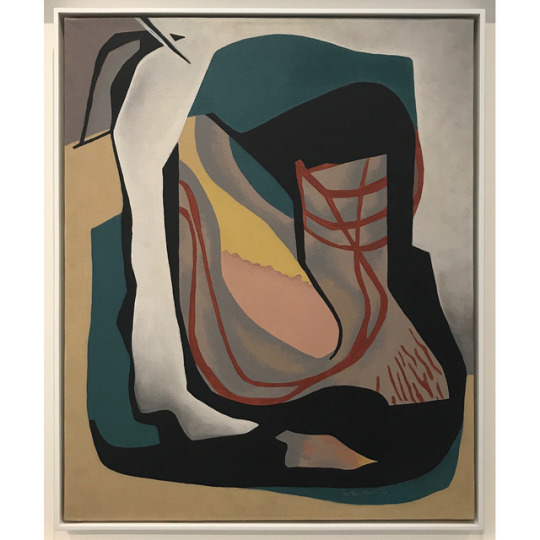
• Former AAA member Claire Falkenstein: Matter in Motion at Michael Rosenfeld Gallery - 100 Eleventh Avenue, New York, NY (212) 247-0082 - April 06 to June 02, 2018 • A career spanning survey of Falkenstein’s painting and sculpture in a wide range of media • #americanabstractartists #clairefalkenstein #michaelrosenfeldgallery (at Michael Rosenfeld Gallery)
12 notes
·
View notes
Text
Crown Heights Townhouse, Brooklyn
Crown Heights Townhouse, Brooklyn Home, NYC Real Estate, NY Redesign Project, Architecture Photos
Crown Heights Townhouse in Brooklyn, New York
Apr 12, 2021
Crown Heights Townhouse
Design Architects: Studio Officina Architecture PLLC
Location: Brooklyn, New York, United States, USA
Two arts professionals approached Studio Officina about renovating their existing 100-year-old Crown Heights Townhouse on a tight budget.
They wanted to find a way to update and modernize the existing 3-floor townhouse while retaining the historic details that had originally drawn them to the building.
The couple wanted to create a bright and light-filled home that would also provide room to grow for their young family.
Early on in the design process, decorative & colorful tile was identified as an affordable and accessible way to reflect the clients’ creative spirit and to inject a sense of delight into the home.
Many decades-worth of paint and plaster finishes were stripped from the interior surfaces to reveal and enhance the historic details of the home.
Existing wood floors were sanded, left unstained and coated with a matte finish to draw out their natural quality and color.
The clients requested to relocate the existing ground floor kitchen to the parlor floor level to take advantage of the higher ceilings and natural light on the upper floor.
They were excited to look for a cement floor tile for this room that might be reminiscent of a European kitchen floor, so a re-invented version of a classic checkerboard tile was selected.
An eat-in kitchen was a key wish for the family as cooking and eating together is an important part of their daily lives.
Plain-sawn oak was selected for the cabinet faces to add warmth and natural grain to the kitchen walls. A simple square subway tile was selected for the backsplash to provide a neutral backdrop to the overall design.
On the top floor of the house, abandoned skylights were exposed & re-glazed. A cramped layout of partition walls was demolished, allowing an extra bedroom and bathroom to be incorporated.
Back-to-back bathrooms for the parents and children employed simple Ikea cabinets refaced with new finishes and pulls to add some whimsy and individuality.
Budget-conscious square subway tile was combined with graphic cement tile patterns to provide calm and light-filled rooms with an added element of flair.
Period stair balusters were found at a local salvage yard and incorporated seamlessly into the top floor stair landing, as though they had always been part of the old house.
Careful budgeting with the client and contractor enabled the project to include a new steel deck at the rear yard, adding a direct connection between the new kitchen and the outdoors.
What was the brief?
To renovate an existing historic townhouse for a young family on a modest budget and to inject new life and vitality into the home.
What were the key challenges?
Creating something unique and special on a tight budget.
What were the solutions?
We aimed to use readily available and affordable materials throughout which we offset with more unique elements such as light fixtures and cabinet pulls. We also brought as much natural daylight and color into the space as possible.
Who are the clients and what’s interesting about them?
Both clients are very engaged in the art world: one works in the arts sector and one is a painter. Their combined eye helped steer the project towards a great result, along with our own studio’s overall design approach.
Key products used:
Square white subway tile from local hardware stores provides a neutral backdrop throughout, combined with decorative and colorful cement tile floors. Light white oak helps provide texture and natural grain.
Crown Heights Townhouse in Brooklyn, NY – Building Information
Design Architects: Studio Officina Architecture PLLC
Project size: 2400 ft2
Site size: 2000 ft2
Completion date: 2020
Building levels: 3
Photography: Ines Leong
Crown Heights Townhouse, Brooklyn image / information received 120421
Location: Brooklyn, NY, United States
Architecture in NYC
New York City Walking Tours
New York Architecture Designs – chronological list
New York Architecture News
Brooklyn Buildings
Apple Store World Trade Center Oculus, Manhattan, NY, USA
photo : Peter Aaron
Apple Store World Trade Center by BCJ
Retail Buildings
Apple Store Upper East Side, New York City, NY, USA
Design: Bohlin Cywinski Jackson
photo : Peter Aaron
Apple Store, Upper East Side, New York City
Williamsburg Hotel Building Brooklyn
Brooklyn Buildings
270 Richards Street, Red Hook
Design: Foster + Partners architects with Adamson Associates Architects
image courtesy architects
Red Hook Complex Brooklyn
Irving Place Carriage House
Design: LOT-EK, Architects
image from architect
Irving Place Carriage House in Brooklyn
Holiday Inn, 300 Schermerhorn Street, Downtown Brooklyn
Architecture: Escobar Design by Lemay
picture : Inessa Photography
Holiday Inn in Downtown Brooklyn
New York Architecture
Recent New York City Architecture
3 Sutton Place Tower on the East Side, New York City, NY
image courtesy Foster + Partners
3 Sutton Place Skyscraper NYC
76 Eleventh Avenue New York Towers, HFZ’s Meatpacking Skyscrapers
Design Architect: Bjarke Ingels of BIG
rendering : BIG
76 Eleventh Avenue New York by BIG
New York Architect
Comments / photos for the Crown Heights Townhouse, Brooklyn Architecture page welcome
Website: Brooklyn
The post Crown Heights Townhouse, Brooklyn appeared first on e-architect.
0 notes
Photo

100 Eleventh Avenue, NewYork - Designed by @ateliersjeannouvel Photo by Shinya Suzuki _ _ _ _ _ _ _ _ _ _ _ _ _ _ _ _ _ _ _ _ _ _ _ _ Follow @archdlofficial for more! 🖤 Tag #archdl or DM your works for Featuring! . . . . . . . . . . . . . . . . . . #thinkingarchitecture #superachitects #architectureonpaper #futurearchitects #betaarchitecture #archstudents #architectureschool #dailyideas #showitbetter #archilovers #actofmapping #divisare #critday #renderdaily #koozarch #kntxtr #archisource #thebna #wisearchi #architonic #next_top_architects #instaarch #illustrarch #arquitetura #ティアイエーbldg #建築 #建築デザイン #空間デザイン #建築設計 (at New York, New York) https://www.instagram.com/p/CJTk4Kxh2-M/?igshid=1wmdohclylw6u
#archdl#thinkingarchitecture#superachitects#architectureonpaper#futurearchitects#betaarchitecture#archstudents#architectureschool#dailyideas#showitbetter#archilovers#actofmapping#divisare#critday#renderdaily#koozarch#kntxtr#archisource#thebna#wisearchi#architonic#next_top_architects#instaarch#illustrarch#arquitetura#ティアイエーbldg#建築#建築デザイン#空間デザイン#建築設計
0 notes

